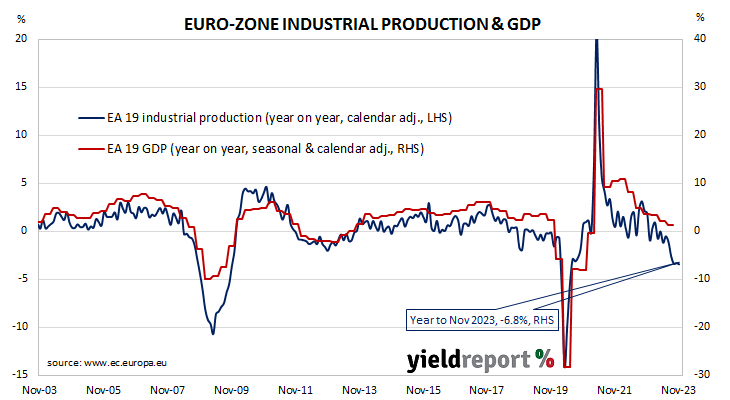Euro-zone industrial production down 0.3% in November, fall in line with expectations; down 6.8% on annual basis; ANZ: broad-based, expected to remain this way for some time; German, French 10-year yields up; output contracts in two of four largest euro economies.
Following a recession in 2009/2010 and the debt-crisis which flowed from it, euro-zone industrial production recovered and then reached a peak four years later in 2016. Growth rates then fluctuated for two years before beginning a steady and persistent slowdown from the start of 2018. That decline was transformed into a plunge in March and April of 2020 which then took over a year to claw back. Production levels in recent quarters have generally stagnated in trend terms.
According to the latest figures released by Eurostat, euro-zone industrial production contracted by 0.3% in November on a seasonally-adjusted and calendar-adjusted basis. The fall was in line with consensus expectations but it was a smaller one than October’s 0.7% contraction. The calendar-adjusted contraction rate on an annual basis increased, from October’s revised rate of 6.6% to 6.8%.
“The fall in production was broad-based across many sectors and is expected to remain this way for some time to come,” said ANZ senior economist Adelaide Timbrell.
German and French sovereign bond yields both rose noticeably on the day despite the figures. By the close of business, the German 10-year bond yield had gained 10bps to 2.25%, while the French 10-year bond yield finished 5bps higher at 2.73%.
Industrial production contracted in two of the euro-zone’s four largest economies. Germany’s production fell by 0.3% over the month while the comparable figures for France, Spain and Italy were +0.5%, +1.1% and -1.5% respectively.


